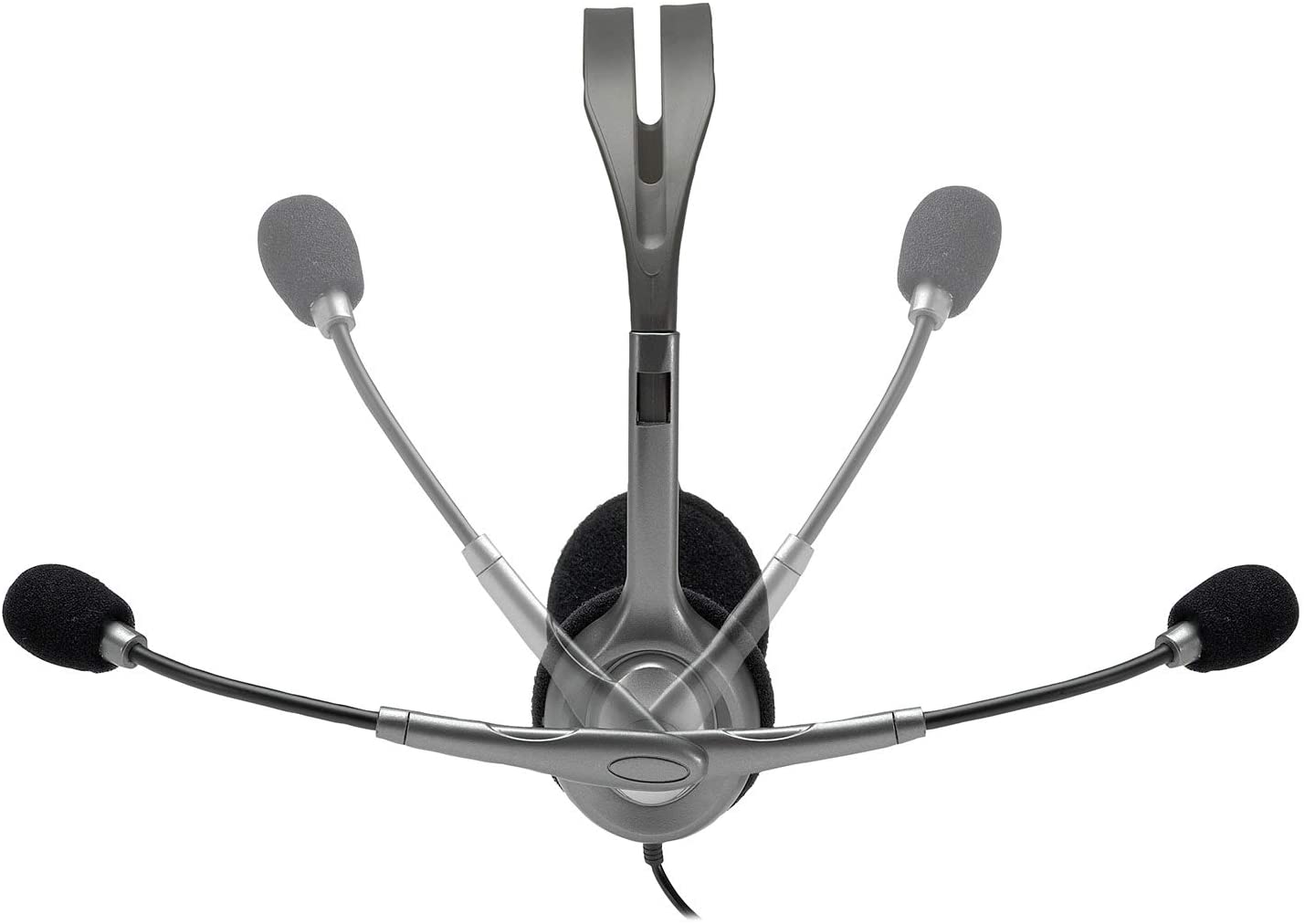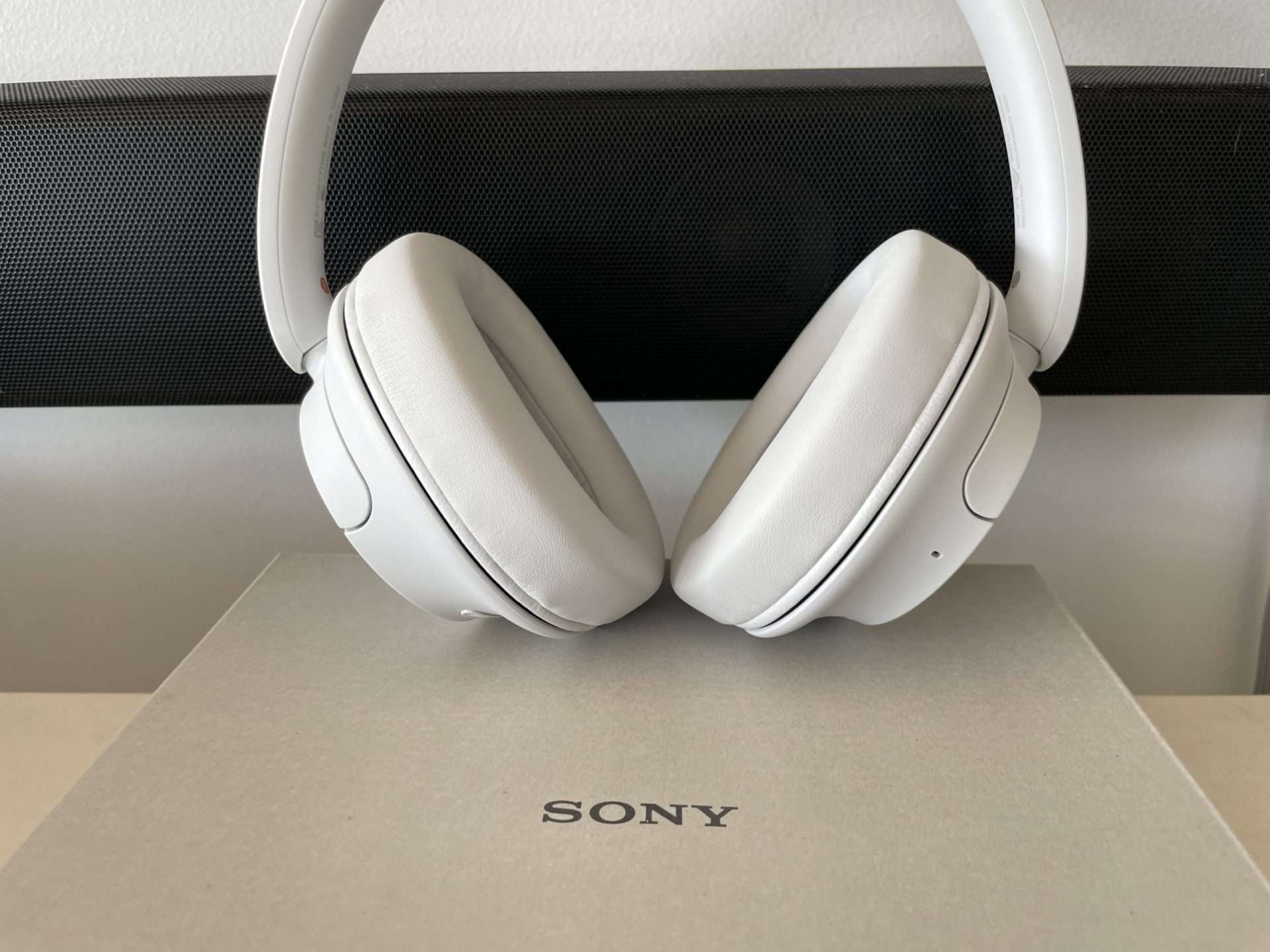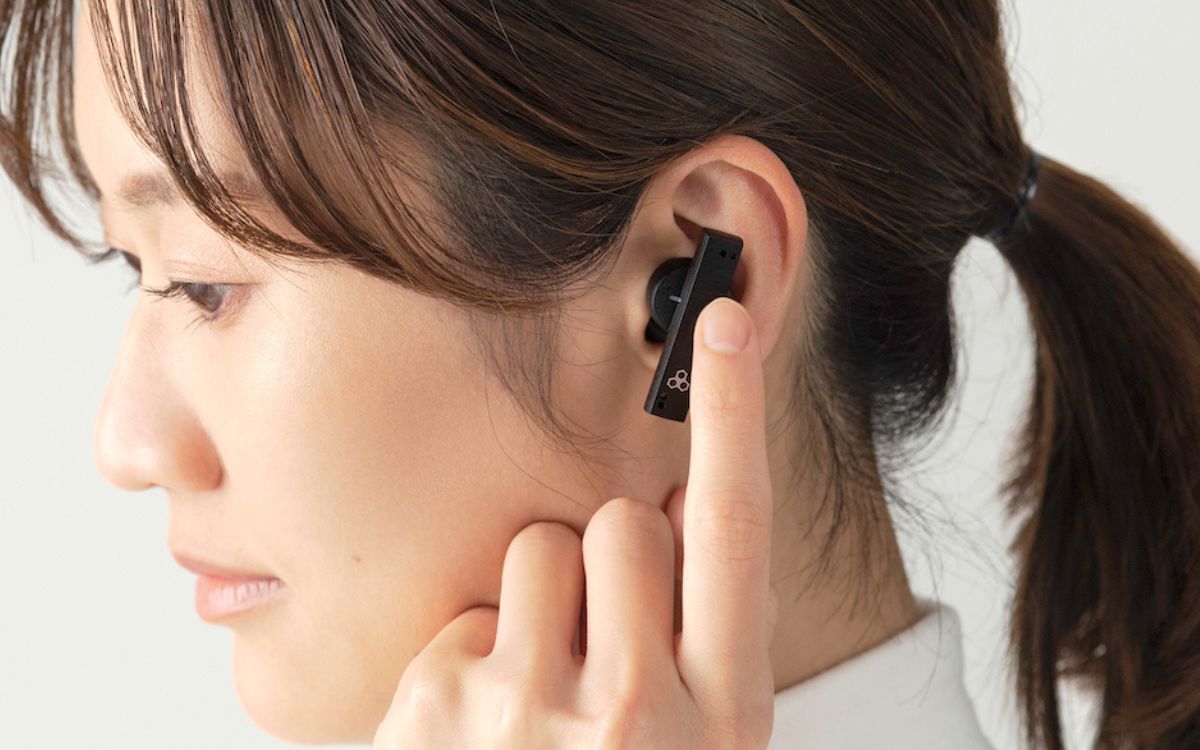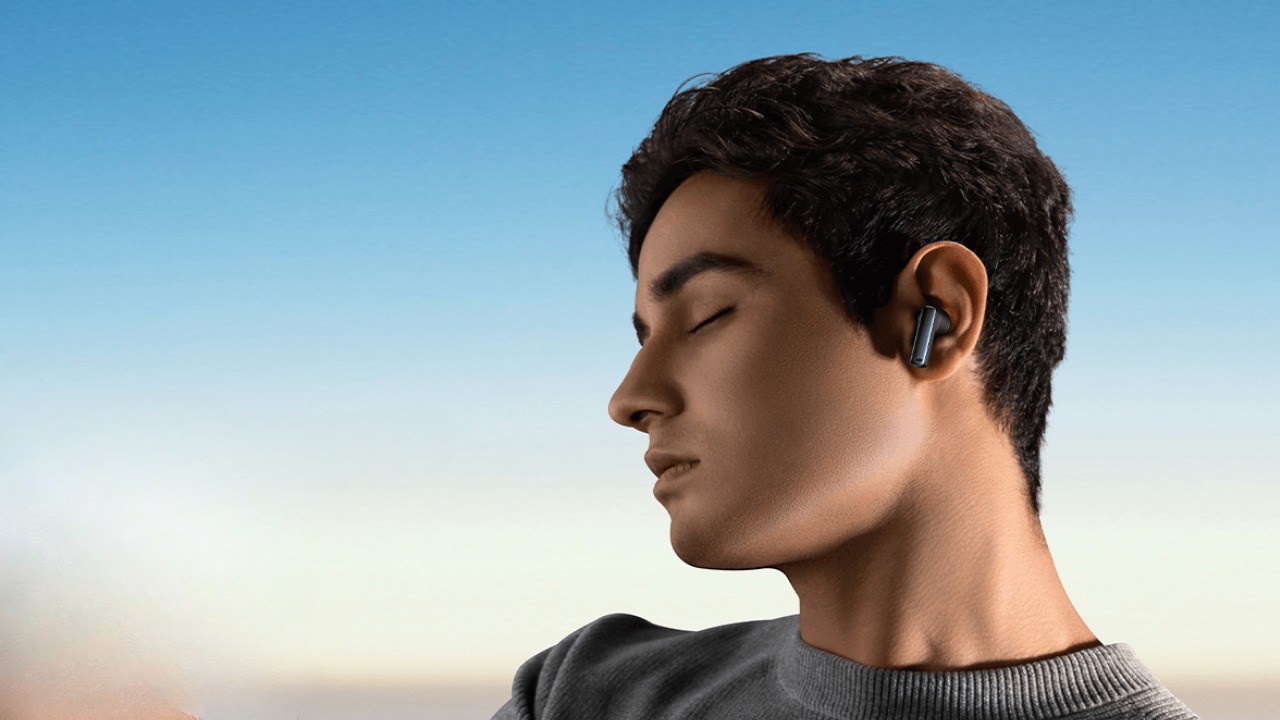Home>Production & Technology>Noise Cancellation>Why Do Noise Cancellation Headphones Give Me A Headache


Noise Cancellation
Why Do Noise Cancellation Headphones Give Me A Headache
Modified: February 18, 2024
Learn why noise cancellation headphones can sometimes cause headaches and how to prevent discomfort while enjoying your audio experience.
(Many of the links in this article redirect to a specific reviewed product. Your purchase of these products through affiliate links helps to generate commission for AudioLover.com, at no extra cost. Learn more)
Table of Contents
- Introduction:
- How Noise Cancellation Headphones Work:
- Potential Causes of Headaches from Noise Cancellation Headphones:
- Overstimulation of the Auditory System:
- Pressure Changes in the Ear:
- Headband Pressure:
- Poorly Fitted Ear Cups:
- Sensitivity to Low-Frequency Sounds:
- Active Noise Cancellation Technology:
- Psychological Factors:
- Tips to Reduce Headaches from Noise Cancellation Headphones:
- Conclusion:
Introduction:
Noise cancellation headphones have become increasingly popular in recent years, offering a sanctuary from the constant background noise that permeates our daily lives. These innovative devices use advanced technology to actively reduce or eliminate unwanted ambient sounds, allowing users to immerse themselves in their favorite music or enjoy peace and quiet in noisy environments. However, some people have reported experiencing headaches after using noise cancellation headphones, raising concerns about their safety and effectiveness.
In this article, we delve into the world of noise cancellation headphones and explore the causes of headaches that some individuals may experience while using them. We will also provide helpful tips to alleviate or prevent these headaches, allowing you to fully enjoy the benefits of noise cancellation technology without any unwanted side effects.
It is important to note that while headaches related to noise cancellation headphones can be distressing, they are typically not a cause for major concern. Most cases of headaches are mild and temporary, subsiding after discontinuing headphone use. However, if you consistently experience severe or prolonged headaches, it is recommended to consult with a healthcare professional to rule out any underlying medical conditions.
Now, let us delve into the intricate workings of noise cancellation headphones and explore the factors that may contribute to headaches in some individuals.
How Noise Cancellation Headphones Work:
The concept behind noise cancellation headphones is relatively straightforward. They utilize a combination of microphones, built-in processors, and speakers to counteract external sounds. The process starts with the built-in microphones capturing the ambient noise surrounding the wearer. These microphones analyze the incoming sound waves and produce an inverse sound wave that is precisely out of phase with the original noise.
Once the inverse sound wave is generated, it is played through the headphones’ speakers. When the original noise and the inverse sound wave combine, they cancel each other out, effectively reducing or eliminating the unwanted noise. The result is a quieter and more peaceful listening experience.
Noise cancellation technology is most effective in environments with constant, low-frequency sounds such as airplane engines, air conditioning units, or the droning hum of a busy office. However, its effectiveness may vary when dealing with sudden or high-pitched noises.
It is important to note that noise cancellation headphones come in two main types: passive and active. Passive noise cancellation headphones rely on physical materials, such as dense foam padding, to block out external noise. While they can provide some level of noise reduction, they are not as effective as their active counterparts. Active noise cancellation headphones, on the other hand, use the microphones and sound wave cancellation process described above to actively reduce external sounds.
Now that we have a basic understanding of how noise cancellation headphones work, let us explore the potential causes of headaches that some individuals may experience when using these headphones.
Potential Causes of Headaches from Noise Cancellation Headphones:
While noise cancellation headphones have numerous benefits, including reducing external noise and providing a more immersive audio experience, they can cause headaches in some individuals. Understanding the potential causes of these headaches can help mitigate discomfort and enhance the overall enjoyment of using noise cancellation headphones.
Here are some common factors that may contribute to headaches when using noise cancellation headphones:
- Overstimulation of the Auditory System: Noise cancellation headphones create a controlled sound environment by actively countering external noise. This continuous alteration between external and internal sounds can exert strain on the auditory system, potentially causing headaches.
- Pressure Changes in the Ear: Wearing noise cancellation headphones can create a sealed and pressurized environment around the ears, which may cause changes in air pressure. These pressure changes can affect the delicate structures of the inner ear and lead to discomfort and headaches.
- Headband Pressure: Some noise cancellation headphones have tight headbands that can exert pressure on the temples or the sides of the head. Prolonged pressure in these areas can cause tension headaches or trigger migraines in individuals who are prone to these conditions.
- Poorly Fitted Ear Cups: Ill-fitting ear cups can create an uncomfortable and tight seal around the ears. This can cause unnecessary pressure on the skin and cartilage, leading to headaches or general discomfort during extended use.
- Sensitivity to Low-Frequency Sounds: While noise cancellation headphones excel at reducing constant low-frequency sounds, they may amplify certain low-frequency noises. Individuals who are sensitive to these sounds may experience headaches or discomfort when exposed to them for extended periods.
It is important to note that these potential causes are not experienced by every individual using noise cancellation headphones. Different people have different sensitivities and tolerances, which can influence their susceptibility to headaches. Additionally, the severity and frequency of headaches can vary from person to person.
In the following sections, we will explore additional factors that may contribute to headaches when using noise cancellation headphones, including the active noise cancellation technology itself and possible psychological factors that can exacerbate discomfort.
Overstimulation of the Auditory System:
One potential cause of headaches when using noise cancellation headphones is the overstimulation of the auditory system. Noise cancellation technology works by constantly altering and countering external sounds, creating a controlled sound environment. This continuous change between external and internal sounds can place strain on the auditory system, leading to discomfort and headaches in some individuals.
Our auditory system is designed to process a wide range of sounds, but it also has its limits. When we are exposed to prolonged or intense auditory stimuli, our auditory system can become fatigued or overwhelmed. This can result in symptoms such as headaches, earache, or a feeling of pressure in the ears.
Noise cancellation headphones, while effective in reducing external noise, can introduce additional stimuli to the auditory system due to the continuous sound wave alterations. This constant change can be taxing for some individuals, especially if they have pre-existing sensitivities or conditions such as hyperacusis (sensitivity to moderate or high-frequency sounds) or misophonia (strong emotional or physiological responses to specific sounds).
To alleviate the overstimulation of the auditory system and reduce the likelihood of headaches, it is important to moderate the volume and duration of headphone use. Taking regular breaks and allowing your auditory system to rest can help prevent fatigue and minimize potential discomfort.
Furthermore, it is recommended to adjust the volume levels to a comfortable level that does not surpass the recommended safe listening level, typically around 70 decibels for extended listening periods. Excessive volume can contribute to overstimulation of the auditory system and increase the risk of headaches or other auditory-related issues.
It is worth noting that individuals with pre-existing auditory conditions or sensitivities may be more susceptible to headaches from overstimulation. If you find that noise cancellation headphones consistently cause discomfort or headaches, it may be beneficial to consult with a healthcare professional specialized in audiology for a comprehensive evaluation and personalized recommendations.
Now let’s move on to explore another potential cause of headaches from using noise cancellation headphones: pressure changes in the ear.
Pressure Changes in the Ear:
When using noise cancellation headphones, another potential cause of headaches is pressure changes in the ear. Wearing headphones creates a sealed and pressurized environment around the ears, which can lead to discomfort and headaches in some individuals.
This pressure change occurs due to the design of noise cancellation headphones, which typically have ear cups that provide a tight seal around the ears to effectively block out external noise. While this seal is essential for effective noise cancellation, it can also create a pressurized sensation within the ear.
When the ear cups create a seal, the air trapped within the ear cavity becomes restricted, leading to a change in pressure. This change in pressure can affect the delicate structures of the ear, including the eardrum and the Eustachian tubes, which are responsible for equalizing the pressure between the middle ear and the environment.
If the pressure is not adequately balanced, individuals may experience discomfort, a sensation of fullness, or headaches. This is similar to the sensation some people feel during airplane takeoff or landing, where the change in altitude results in pressure changes within the ears.
To alleviate pressure-related headaches when using noise cancellation headphones, there are several techniques you can try:
- Take Breaks: Give your ears regular breaks from wearing noise cancellation headphones to allow for pressure equalization and to relieve any discomfort that may have built up.
- Adjust Ear Cup Seal: Experiment with the positioning and tightness of the ear cups to find a balance between a comfortable fit that effectively blocks out external noise and minimizes any excessive pressure build-up.
- Yawning or Swallowing: Engage in activities that promote the opening of the Eustachian tubes, such as yawning or swallowing, to help equalize the pressure inside the ears.
- Use Ventilated Ear Cups: Consider using noise cancellation headphones with ventilated ear cups, which allow for better airflow and pressure equalization.
By implementing these techniques, you can help alleviate the discomfort caused by pressure changes in the ear and reduce the likelihood of experiencing headaches while using noise cancellation headphones.
Next, we will explore the potential impact of headband pressure on headaches from noise cancellation headphones.
Headband Pressure:
Headband pressure is another potential cause of headaches when using noise cancellation headphones. Some headphones have tight headbands that exert pressure on the temples or the sides of the head, leading to discomfort and headaches, especially during extended periods of use.
The pressure from the headband can restrict blood flow and contribute to tension headaches or trigger migraines in individuals who are susceptible to these conditions. It can also cause discomfort and pain in the scalp and the areas where the headband rests.
In some cases, the discomfort may not be immediate but can gradually build up over time as the pressure continues to be applied. This can make the wearing experience more unpleasant and may lead to headaches or general discomfort.
To minimize headband-induced headaches, consider the following tips:
- Adjust Headband Placement: Experiment with the positioning and tightness of the headband to find a comfortable fit that applies minimal pressure on the temples or sides of the head.
- Opt for Adjustable Headbands: Choose noise cancellation headphones with adjustable headbands, allowing you to customize the fit for maximum comfort and minimal pressure.
- Take Regular Breaks: Give your head and scalp regular breaks from the pressure of the headband to relieve any discomfort and reduce the risk of headaches.
- Choose Lightweight Headphones: Consider lightweight noise cancellation headphones that put less strain on the head and minimize the pressure exerted by the headband.
By implementing these strategies, you can help alleviate headband-induced headaches and make your experience with noise cancellation headphones more comfortable and enjoyable.
Next, we will discuss another factor that can contribute to headaches when using noise cancellation headphones: poorly fitted ear cups.
Poorly Fitted Ear Cups:
The fit of the ear cups on noise cancellation headphones is crucial for comfort and audio quality. Poorly fitted or ill-fitting ear cups can contribute to headaches and discomfort during extended use.
When the ear cups do not fit properly, they can create unnecessary pressure on the ears, leading to discomfort and potentially triggering headaches. The pressure may be unevenly distributed or concentrated on specific points, such as the earlobes or the cartilage of the outer ear.
Additionally, poorly fitted ear cups can compromise the effectiveness of noise cancellation. A proper seal between the ear cups and the ears is essential for optimal noise reduction. If the seal is not achieved due to improper fit, the headphones may not effectively block out external noise, leading to the need to increase the volume, which can further contribute to discomfort and potential headaches.
To prevent headaches caused by poorly fitted ear cups, consider the following tips:
- Choose the Right Size: Ensure that the headphones you choose have ear cups that match the size and shape of your ears. Check the manufacturer’s guidelines or try on different models to find the most suitable fit.
- Adjust the Position: Experiment with the positioning of the ear cups to find a comfortable and secure fit. The cups should cover the ears completely, forming a seal without excessive pressure.
- Opt for Adjustable Ear Cups: Look for noise cancellation headphones that allow you to adjust the position or tilt of the ear cups. This allows for a more personalized fit, reducing the risk of discomfort and headaches.
- Consider Memory Foam Ear Pads: Some noise cancellation headphones come with memory foam ear pads that mold to the shape of your ears, providing a more customized and comfortable fit.
By following these recommendations, you can ensure a proper fit and reduce the likelihood of headaches associated with poorly fitted ear cups on noise cancellation headphones.
Next, we will explore another potential cause of headaches: sensitivity to low-frequency sounds.
Sensitivity to Low-Frequency Sounds:
While noise cancellation headphones excel at reducing constant low-frequency sounds, it is important to note that they may amplify certain low-frequency noises. This can be a potential cause of headaches for individuals who are sensitive to these sounds.
Everyone has a different level of sensitivity to various frequencies of sound. Some individuals may have heightened sensitivity to low-frequency sounds, such as the rumble of an airplane engine or heavy bass from music. When these sounds are amplified by noise cancellation headphones, it can lead to discomfort, headaches, or a feeling of pressure in the ears.
If you are sensitive to low-frequency sounds and experience headaches when using noise cancellation headphones, there are a few strategies you can try:
- Adjust Equalizer Settings: Many noise cancellation headphones come with adjustable equalizer settings that allow you to fine-tune the audio output. Reduce the bass or adjust the frequency response to minimize the impact of low-frequency sounds.
- Try Different Noise Cancellation Modes: Some models of noise cancellation headphones offer multiple noise cancellation modes, such as “high,” “low,” or “off.” Experiment with these modes to find the setting that minimizes the amplification of low-frequency sounds without compromising the overall noise reduction.
- Choose Headphones with Customizable Sound Profiles: Consider noise cancellation headphones that offer customizable sound profiles or presets. This allows you to personalize the audio settings to suit your preferences and reduce the impact of low-frequency sounds.
- Limit Exposure to Low-Frequency Sounds: If you are particularly sensitive to low-frequency sounds, it may be necessary to limit your exposure to environments or situations where these sounds are prevalent. This can help reduce the risk of headaches or discomfort.
By implementing these strategies, you can mitigate the impact of low-frequency sounds and minimize the likelihood of experiencing headaches while using noise cancellation headphones.
In the next section, we will delve into the active noise cancellation technology itself and its potential role in causing headaches.
Active Noise Cancellation Technology:
Active noise cancellation (ANC) technology is a key feature of noise cancellation headphones that allows them to reduce or eliminate external sounds. While ANC can greatly enhance the listening experience, it can also potentially contribute to headaches in some individuals.
ANC works by using microphones to capture external sounds, analyzing them, and generating inverse sound waves that cancel out the incoming noise. While this process effectively reduces ambient sounds, it can introduce additional factors that may lead to discomfort or headaches.
One aspect to consider is the adjustment period when first using noise cancellation headphones with active noise cancellation. Your auditory system needs time to acclimate to the altered sound experience, which may vary from person to person. During this adjustment period, individuals may experience temporary discomfort or headaches as their auditory system adapts to the new sound environment.
Another consideration is the quality and precision of the ANC technology itself. Cheaper or less advanced models may not be as effective in canceling out unwanted noise, leading to an incomplete cancellation process that can create fluctuations or artifacts in the sound. These inconsistencies can be bothersome and potentially trigger headaches or discomfort.
Additionally, the cancellation of external noise can sometimes cause a sensation of “pressure” in the ears. While this pressure is different from the pressure changes discussed earlier, it can still contribute to discomfort or headaches for sensitive individuals.
If you suspect that ANC technology is contributing to your headaches, consider the following suggestions:
- Gradually Acclimate to ANC: Give yourself time to adapt to the ANC technology by gradually increasing the usage duration. Start with shorter sessions and gradually extend the length of time you use the headphones.
- Invest in High-Quality ANC Headphones: Higher-end noise cancellation headphones often employ advanced ANC technology, providing superior noise cancellation and minimizing potential inconsistencies that can contribute to discomfort.
- Pay Attention to ANC Settings: Some noise cancellation headphones offer different modes or levels of active noise cancellation. Experiment with these settings to find the level that offers the best balance between noise reduction and comfort.
- Take Regular Breaks: Just as with any prolonged headphone use, it is important to take regular breaks to allow your auditory system to rest and prevent the accumulation of discomfort or headaches.
By using these strategies, you can better manage the potential impact of active noise cancellation technology on your overall listening experience and minimize the risk of headaches associated with ANC-enabled noise cancellation headphones.
In the following section, we will explore the potential role of psychological factors in causing headaches from the use of noise cancellation headphones.
Psychological Factors:
Psychological factors can play a role in headaches experienced while using noise cancellation headphones. Our mental and emotional state can influence our perception and response to various stimuli, including the use of headphones and exposure to certain sounds.
Stress and anxiety are common psychological factors that can contribute to headaches. When we are stressed or anxious, our bodies can become more sensitive to sensory stimuli, and this increased sensitivity can potentially manifest as headaches or other physical discomfort.
Using noise cancellation headphones to create a quiet and peaceful environment can be beneficial for relaxation and stress reduction. However, if you have stress or anxiety-related headaches, the act of wearing headphones or being in a closed-off sound environment may inadvertently contribute to the discomfort due to the focus on the head and ears.
Additionally, the expectation or anticipation of experiencing headache symptoms while using noise cancellation headphones can trigger a psychological response, known as a nocebo effect. The nocebo effect is the opposite of the placebo effect, where negative expectations or beliefs can lead to the actual experience of negative symptoms.
If you suspect that psychological factors are contributing to your headaches, consider the following approaches:
- Practice Stress Management Techniques: Incorporate stress management techniques into your daily routine, such as deep breathing exercises, meditation, or engaging in activities that promote relaxation. This can help reduce the overall stress and anxiety levels that may contribute to headaches.
- Address Any Underlying Psychological Issues: If you consistently experience anxiety, stress, or other psychological concerns that contribute to headaches, consider seeking support from a mental health professional. They can help you develop coping strategies and address any underlying issues that may be influencing your headache experiences.
- Reframe Expectations: Challenge negative expectations or beliefs regarding using noise cancellation headphones and experiencing headaches. Remind yourself that not everyone experiences headaches from using headphones, and focus on the positive benefits you derive from them.
- Take Breaks and Practice Moderation: Use noise cancellation headphones in moderation, taking regular breaks to prevent overstimulation and potential psychological discomfort associated with prolonged use.
By addressing potential psychological factors and implementing these strategies, you can potentially alleviate or reduce the impact of psychological factors on headaches when using noise cancellation headphones.
Next, we will provide some helpful tips to reduce headaches associated with noise cancellation headphones.
Tips to Reduce Headaches from Noise Cancellation Headphones:
If you experience headaches when using noise cancellation headphones, there are several tips and techniques you can try to help alleviate or prevent discomfort. These strategies can enhance your overall listening experience and minimize the risk of headaches:
- Take Regular Breaks: Give your ears and auditory system regular rest periods by taking breaks from wearing noise cancellation headphones. This allows your ears to recover and reduces the chance of overstimulation that can lead to headaches.
- Adjust the Volume: Listen at a comfortable volume level that does not exceed the recommended safe listening level. Excessive volume can contribute to headaches and auditory fatigue.
- Experiment with Different Fit: Adjust the position, tightness, and angle of the headphones to find a comfortable fit. Avoid excessive pressure or tightness around the headband and ensure the ear cups create a proper seal without causing discomfort.
- Opt for Lightweight and Comfortable Headphones: Choose noise cancellation headphones that are lightweight and designed for extended use. Comfortable headphones will minimize the risk of headaches from prolonged wear.
- Use ANC Modes Wisely: If your headphones have different ANC modes or levels, experiment with them to find the right balance between noise reduction and comfort. Some individuals may find a lower ANC setting more comfortable for extended use.
- Address Underlying Sensitivities or Medical Conditions: If you consistently experience headaches or discomfort even when following the tips mentioned, consider consulting with a healthcare professional. They can help identify any underlying sensitivities or medical conditions that may contribute to your symptoms.
- Manage Stress and Anxiety: Stress and anxiety can exacerbate headaches. Incorporate stress management techniques into your daily routine to help reduce overall stress levels and potentially alleviate headache symptoms.
Remember, everyone’s experience with noise cancellation headphones is unique, and what works for one person may not work for another. It may require some trial and error to find the most comfortable approach for you.
By implementing these tips and techniques, you can enhance your enjoyment of noise cancellation headphones and minimize the likelihood of experiencing headaches while using them.
Now, let’s conclude our exploration of headaches associated with noise cancellation headphones.
Conclusion:
Noise cancellation headphones offer a remarkable solution for enjoying music or finding respite from noisy environments. However, some individuals may experience headaches when using these headphones. Understanding the potential causes of these headaches can help you mitigate discomfort and fully enjoy the benefits of noise cancellation technology.
Several factors contribute to headaches when using noise cancellation headphones, such as overstimulation of the auditory system, pressure changes in the ear, headband pressure, poorly fitted ear cups, sensitivity to low-frequency sounds, and psychological factors. By addressing these factors, you can reduce the likelihood of experiencing headaches and enhance your overall listening experience.
Implementing strategies like taking regular breaks, adjusting the volume, finding a proper fit, choosing lightweight and comfortable headphones, utilizing different ANC modes wisely, managing stress and anxiety, and addressing any underlying sensitivities or medical conditions can help alleviate or prevent headaches associated with noise cancellation headphones.
Remember, everyone’s experience is unique, and it may take some experimentation to find the right combination of techniques that work best for you. If headaches persist or become severe, it is advisable to consult with a healthcare professional to rule out any underlying medical conditions.
Ultimately, with the proper understanding and application of these tips, you can enjoy the benefits of noise cancellation headphones while minimizing the risk of headaches. Embrace the tranquility and immersive audio experience that noise cancellation technology offers without compromising your well-being.
Now, go forth, put on your noise cancellation headphones, and immerse yourself in the music or peaceful environment you desire, headache-free!











